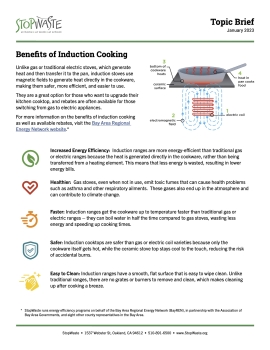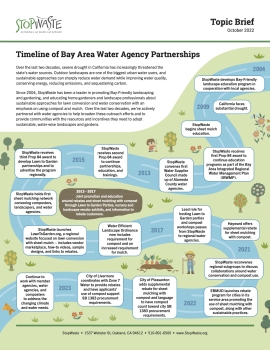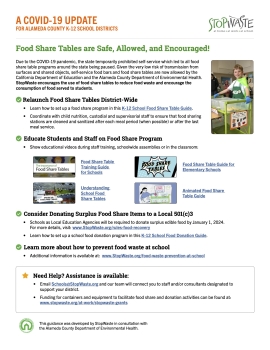Resource Library
 Topic Briefs
Topic Briefs Topic Briefs
Topic BriefsCalifornia’s schools produce over half a million tons of waste each year, with much of this waste coming from the cafeteria. While the majority of the waste stream in schools is comprised of organics, the rest is primarily from the single-use trays, disposable plastic utensils, and condiment packets.
Read More Topic Briefs
Topic BriefsFrom uneaten leftovers to discarded wrapping paper, the holidays come with a lot of waste. In fact, from Thanksgiving to New Year’s, Americans produce 25 percent more waste than average. But with a little planning and intention, we can reduce our footprint while still experiencing the joy of coming together with family and friends.
Read More Topic Briefs
Topic BriefsOver the last two decades, severe drought in California has increasingly threatened the state’s water sources. Outdoor landscapes are one of the biggest urban water users, and sustainable approaches can sharply reduce water demand while improving water quality, conserving energy, reducing emissions, and sequestering carbon.
Read More Topic Briefs
Topic BriefsCalifornia has increasingly been setting ambitious targets to reduce greenhouse gas (GHG) emissions and slow climate change. To help the state meet its goals, local jurisdictions have outlined their own commitments to climate action locally in the form of Climate Action Plans (CAPs). Alameda County was one of the first California counties in which all jurisdictions have developed CAPs.
Read More Topic Briefs
Topic Briefs Topic BriefsRead More
Topic BriefsRead MoreThis awards program honors Alameda County businesses and institutions whose leadership and continuous efforts to improve environmental performance and business efficiency have achieved outstanding results. Since the inception of the awards program in 2000, well over 100 Alameda County businesses and institutions have been recognized.
 Topic Briefs
Topic BriefsStopWaste’s RE:Source Guide is Alameda County’s one-stop shop for answers on what to do with an unwanted item. The Guide provides easy access to information on proper disposal with the goal of maximizing the benefits of compost, reuse, repair and recycling, while minimizing contamination from items going in the wrong bin.
Read More
Due to the COVID-19 pandemic, the state temporarily prohibited self-service which led to all food share table programs around the state being paused. Given the very low risk of transmission from surfaces and shared objects, self-service food bars and food share tables are now allowed by the California Department of Education and the Alameda County Department of Environmental Health.
Read More